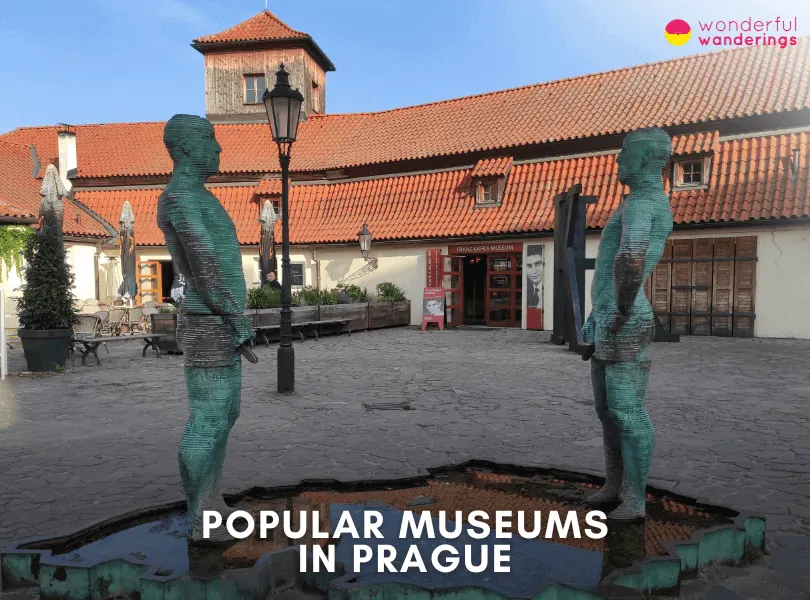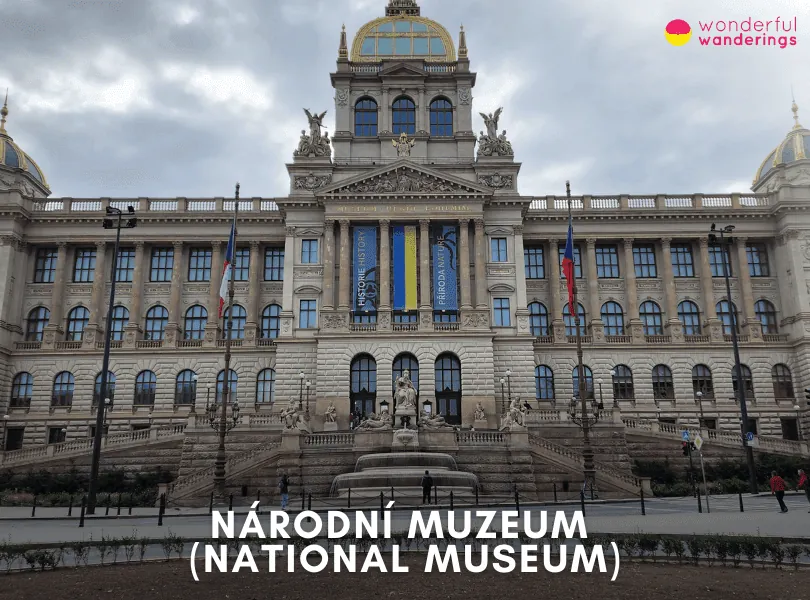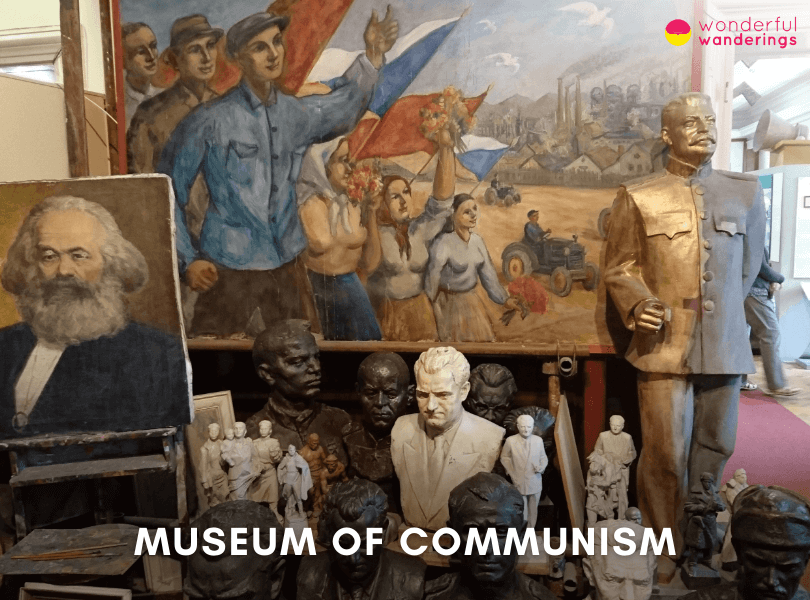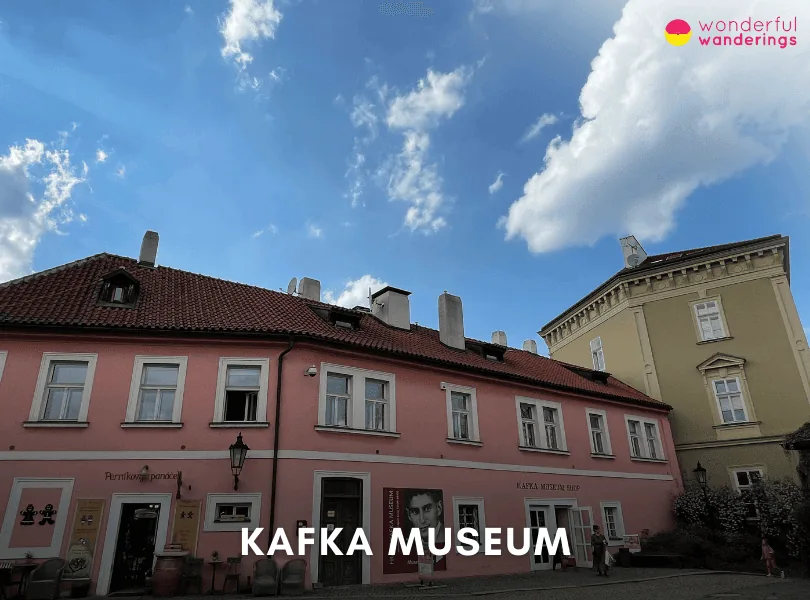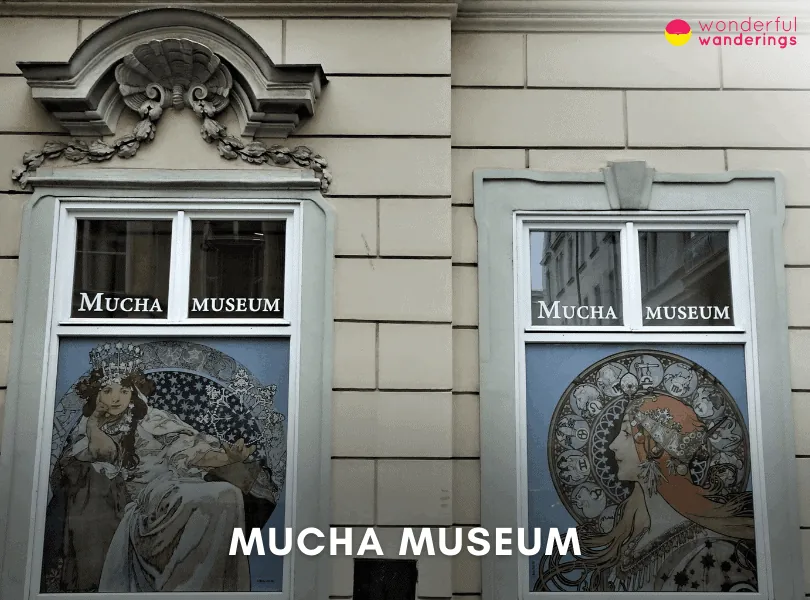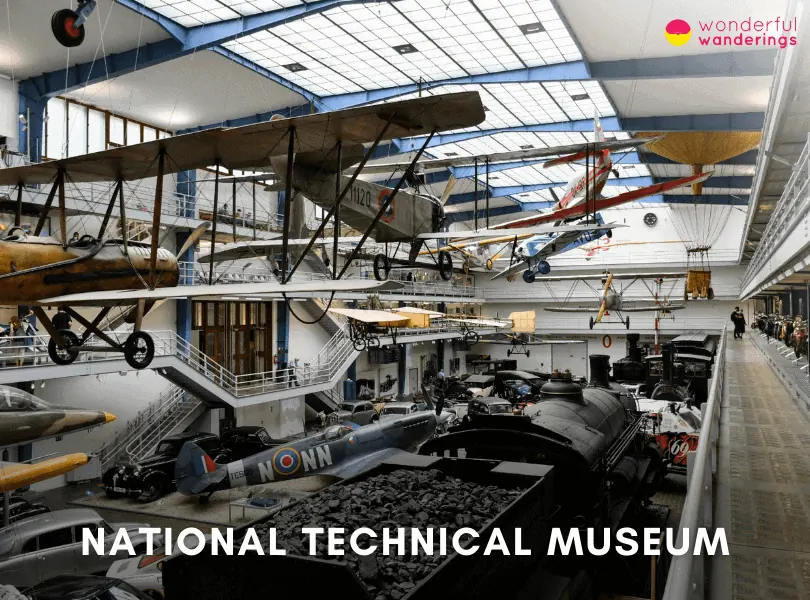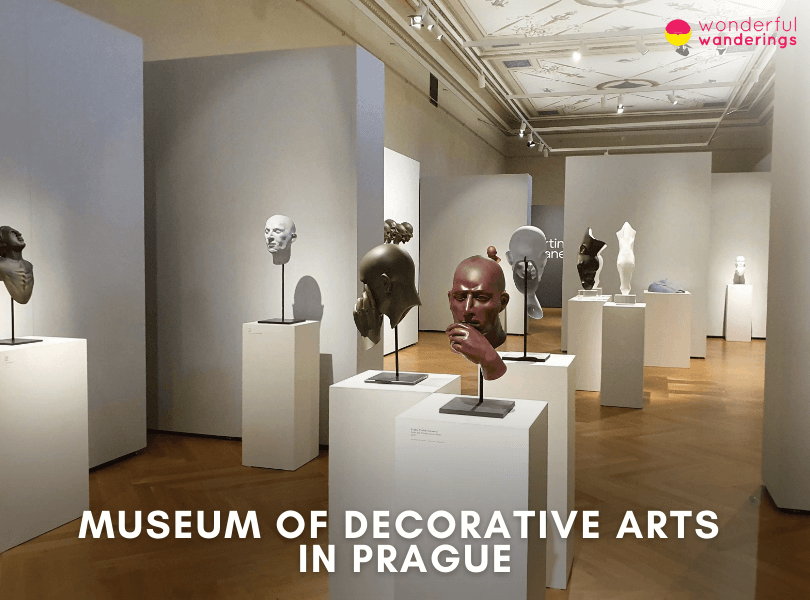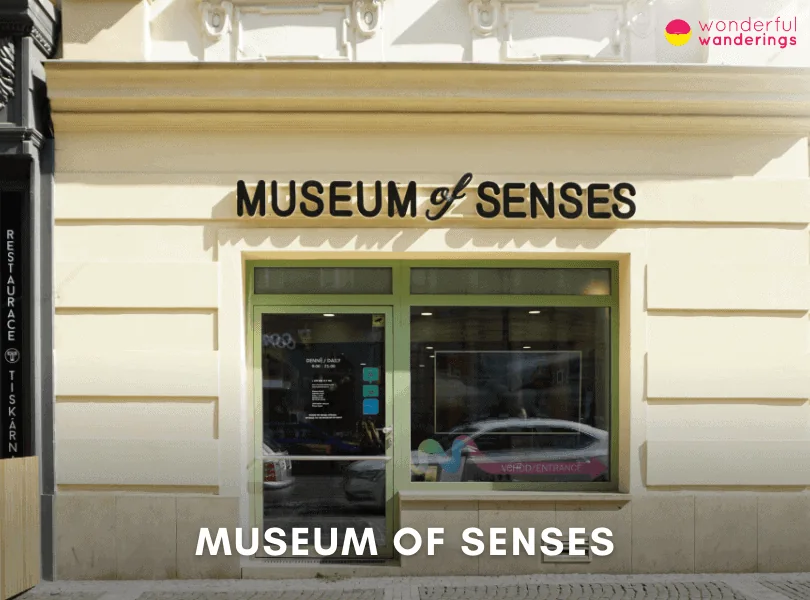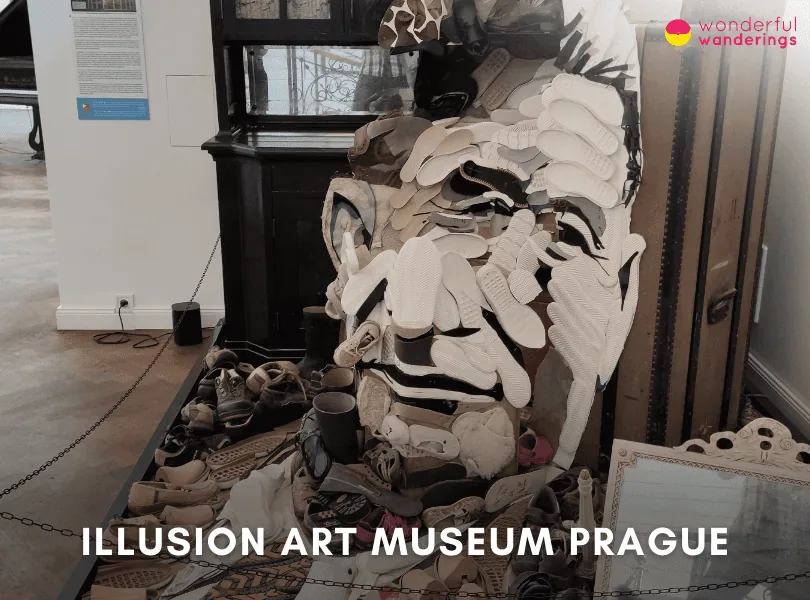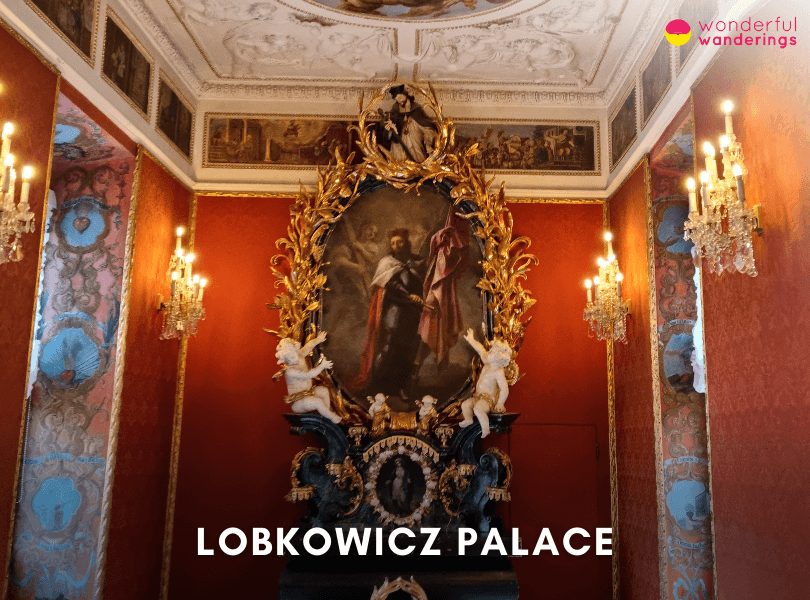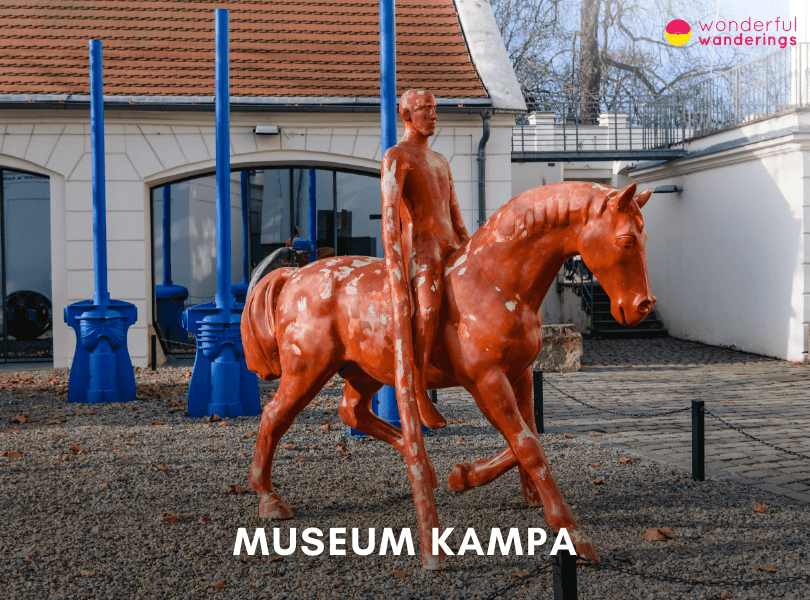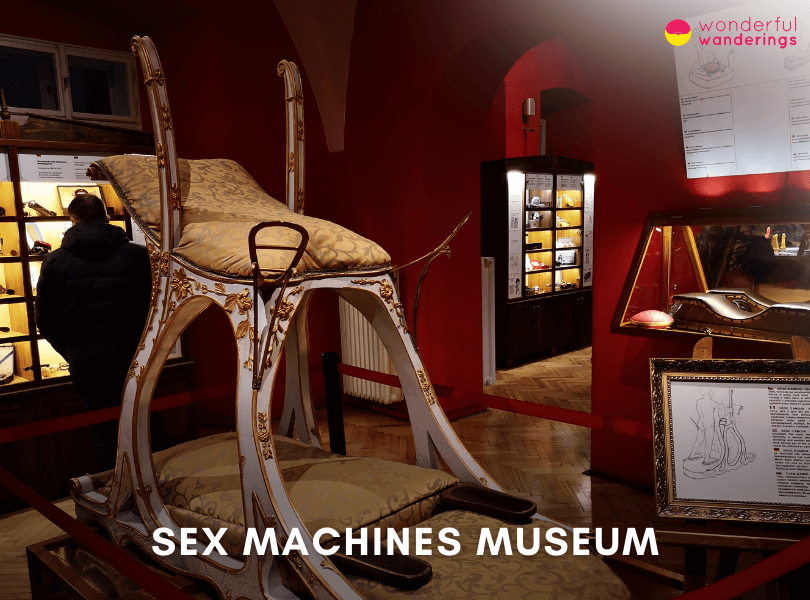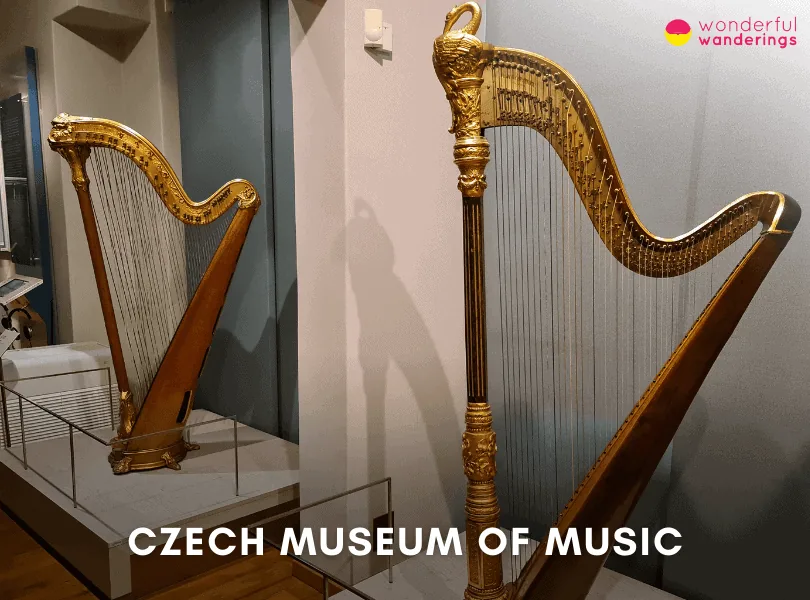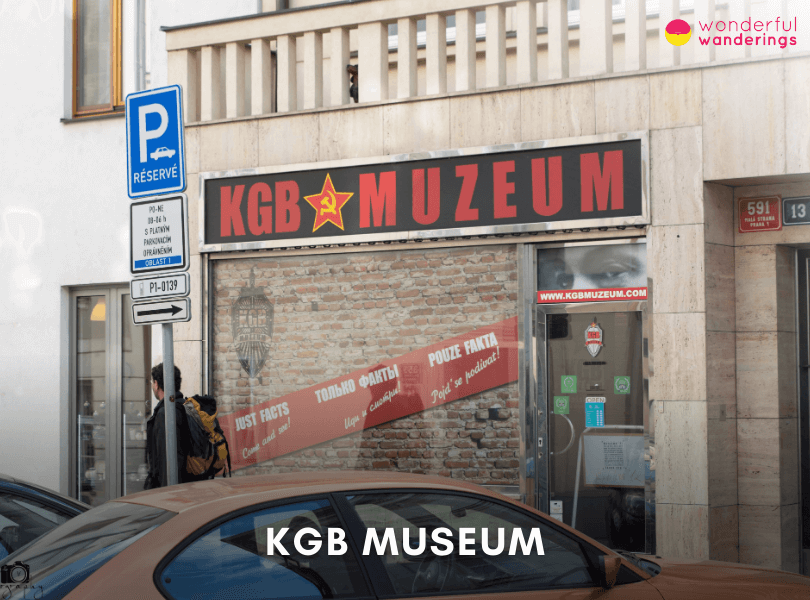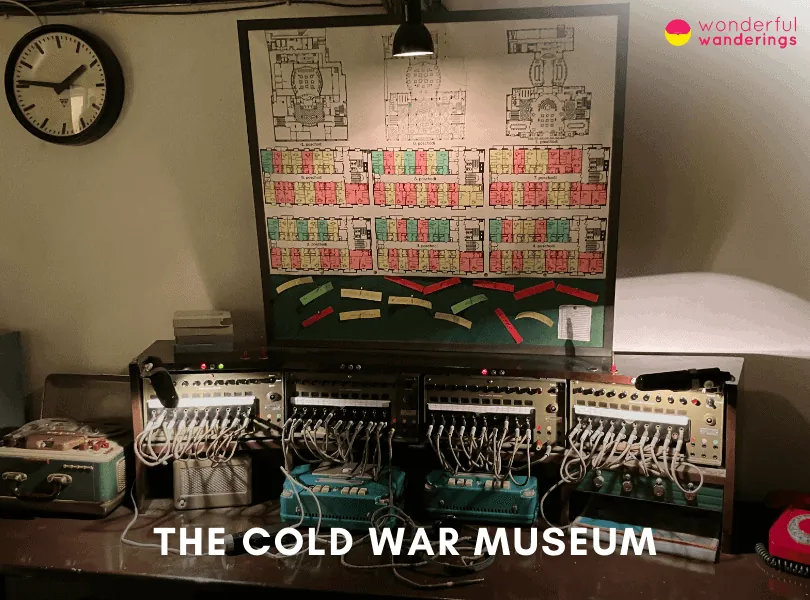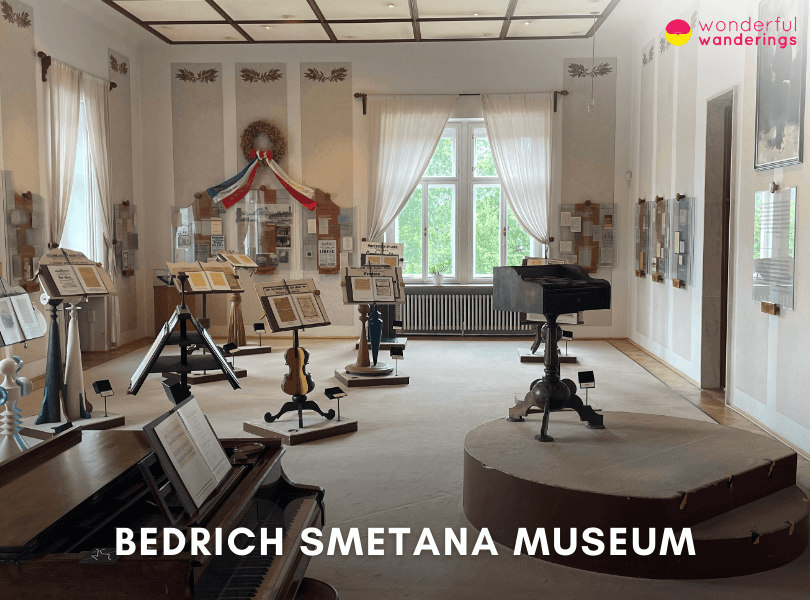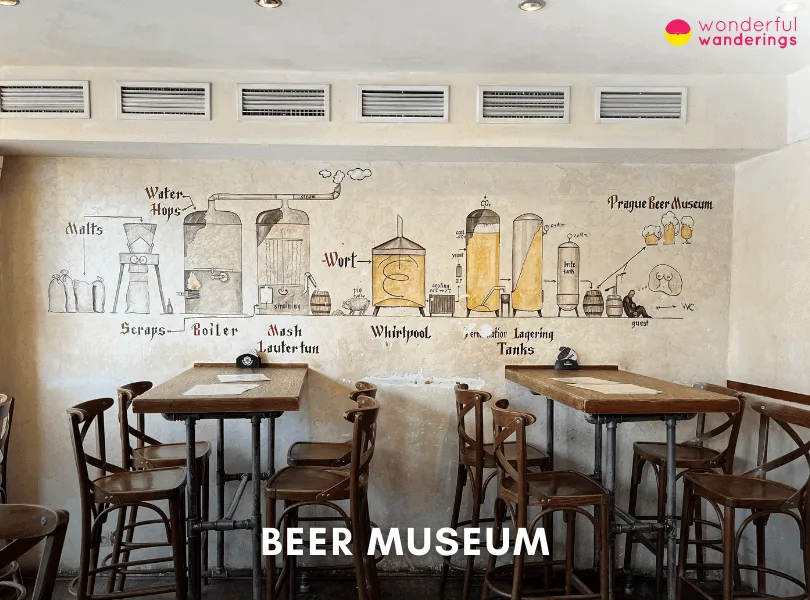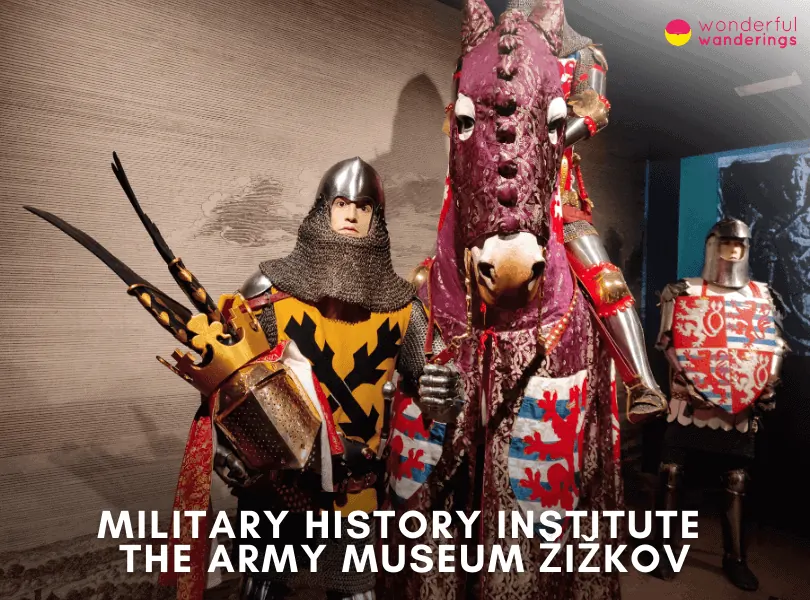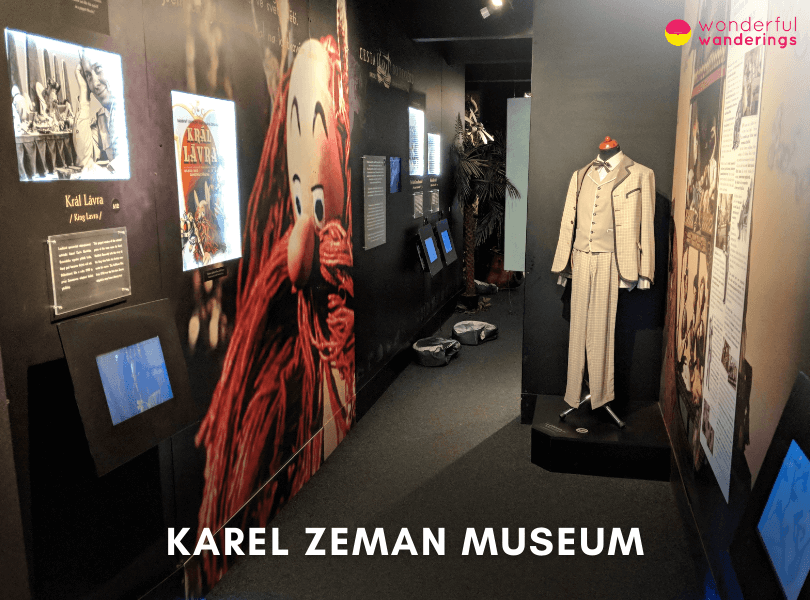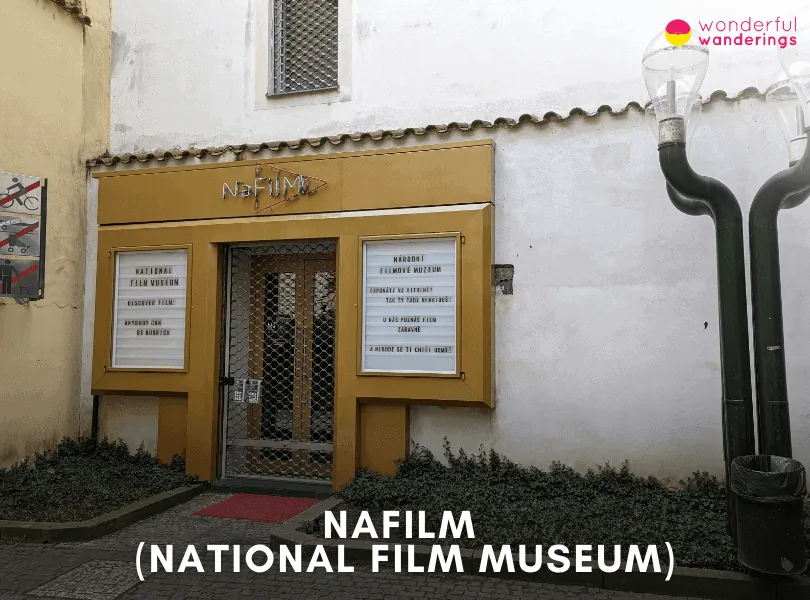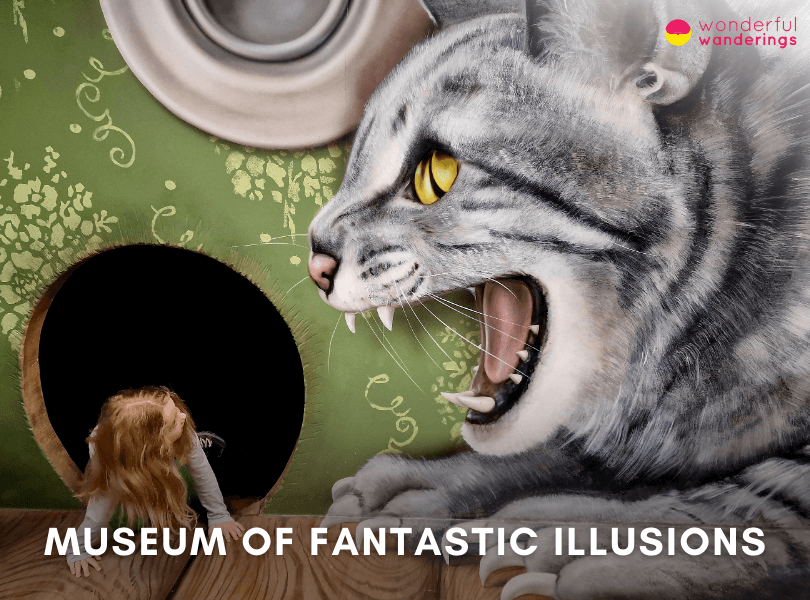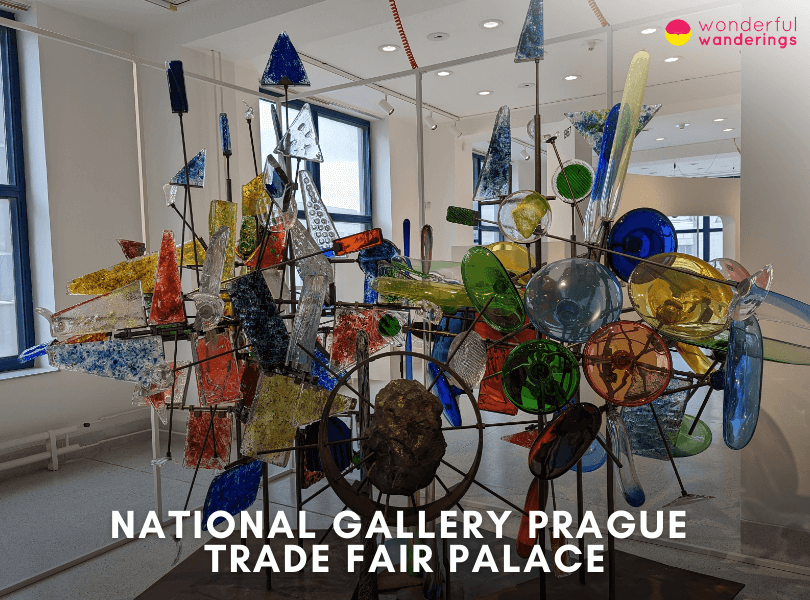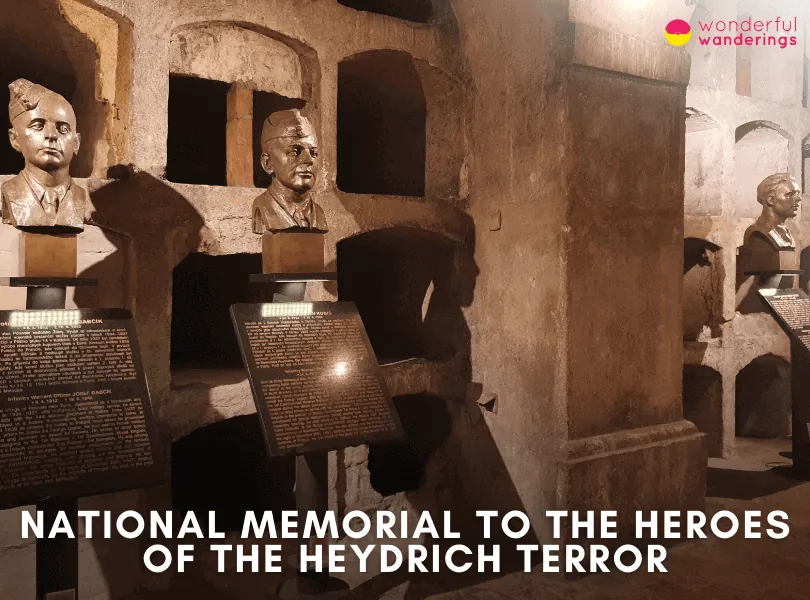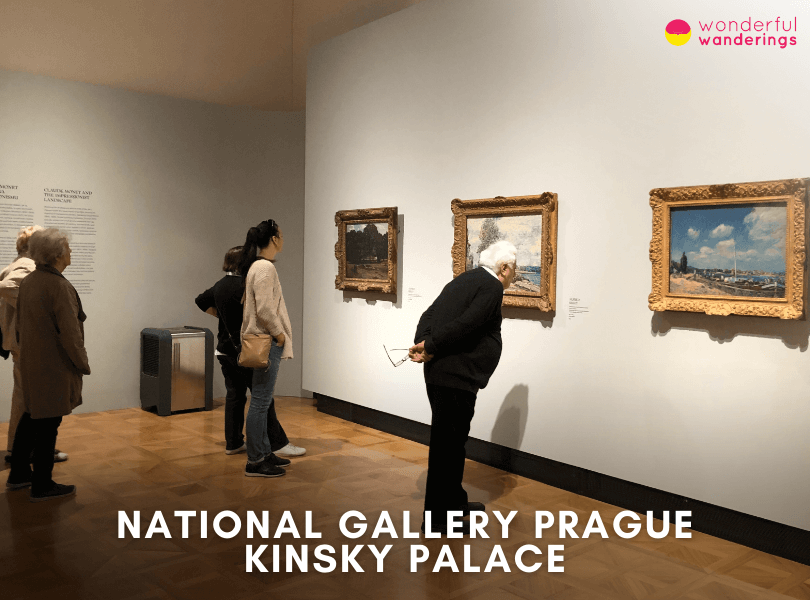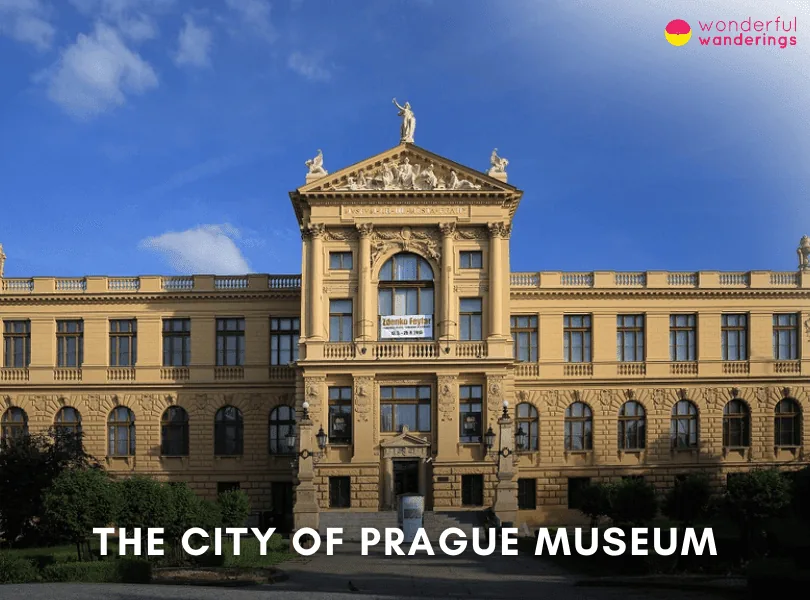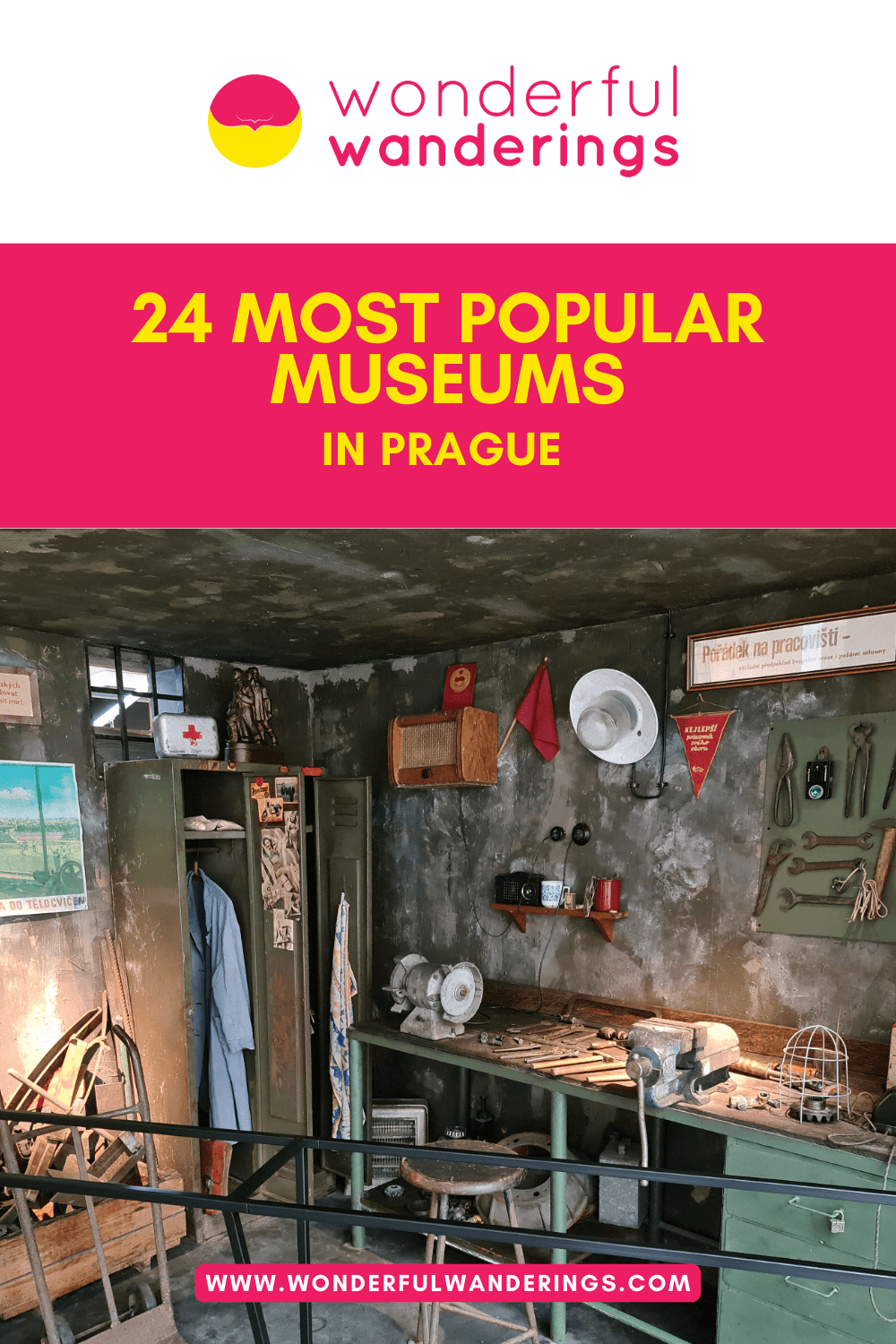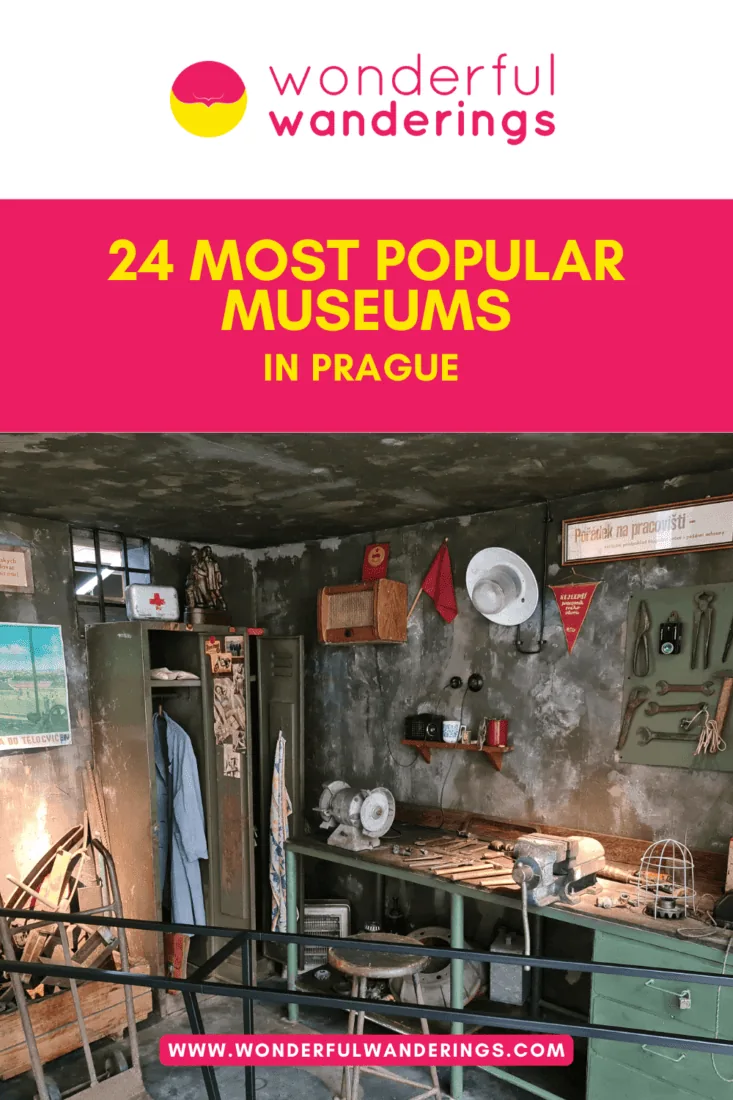Prague greets visitors with its mix of history, culture and architectural beauty. Known as the “City of a Hundred Spires”, Prague’s skyline is filled with Gothic, Baroque and Renaissance structures. The city’s streets, lined with cobblestones, give a sense of history, while the Charles Bridge connects the Old Town and Lesser Town timelessly, with the Prague Castle dominating the landscape and standing as a symbol of the city’s past.
At the heart of Prague’s attraction lies a collection of museums that offer insights into its heritage. The National Museum on Wenceslas Square holds diverse art, history and sciences exhibits. Focusing on Czech history and natural wonders, this institution comprehensively explores the nation’s identity. Meanwhile, the Museum of Communism engages visitors with an interactive journey through the country’s complex political history, using artefacts and multimedia to illuminate important moments.
Art lovers can find enough delight in Prague’s galleries. The Mucha Museum honours the Art Nouveau genius Alphonse Mucha, showcasing his iconic creations that personify an era. The Kinsky Palace, affiliated with the National Gallery Prague, hosts a collection representing various periods and styles. Sitting atop Prague Castle, the Lobkowicz Palace immerses visitors in European art and musical history through its impressive array of paintings, manuscripts and musical instruments.
Beyond its museums, Prague offers lively markets, cosy cafes and a spirited nightlife. The Prague Astronomical Clock is a masterpiece of mediaeval engineering that gains attention in the Old Town Square, captivating onlookers with its hourly performances. During the holiday season, the city transforms into a magical wonderland with festive decorations and charming Christmas markets that features warmth and joy.
Listed below are the best museums in Prague.
- Národní muzeum (National Museum). The National Museum is an iconic institution in Prague, encapsulating the nation’s rich history and cultural heritage. Its impressive architectural presence on Wenceslas Square draws visitors to explore its vast collection spanning natural history, archaeology and the arts. With a mission to preserve and share the Czech identity, the National Museum’s diverse exhibits provide a comprehensive view of the country’s past, making it a top choice for those seeking a deep understanding of Czech history.
- Museum of Communism. Museum of Communism offers a unique and immersive experience that dives into the complex history of Czechoslovakia during the communist era. Utilising artefacts, photographs and interactive displays, the museum sheds light on the impact of communism on daily life, politics and culture. Its thought-provoking approach to history and the utilisation of multimedia elements make it a compelling destination for those interested in exploring the realities of the communist period.
- Kafka Museum. Devoted to the life and literary legacy of the acclaimed writer Franz Kafka, the Kafka Museum provides an intimate insight into the mind of this genius figure. Through personal correspondence, manuscripts and multimedia installations, visitors can explore the themes that permeate Kafka’s work and go into the complexities of his personal life. Kafka Museum’s interactive displays and engaging storytelling contribute to its appeal, making it a must-visit for literature lovers and those curious about the mysterious world of Kafka.
- Mucha Museum. Dedicated to the famous Art Nouveau artist Alphonse Mucha, the Mucha Museum pays homage to his captivating works that defined an era. Housing a collection of paintings, decorative arts and original posters, the museum provides an immersive journey into the elegance of Mucha’s artistry. Mucha Museum’s focused approach allows visitors to appreciate the intricate details and symbolism in Mucha’s masterpieces, highlighting his significant influence on the Art Nouveau movement. Its dedication to a singular artist’s legacy makes it a captivating destination for art lovers and those seeking to explore the beauty of the Art Nouveau era.
1. Národní muzeum (National Museum)
Národní muzeum (National Museum) is a prominent cultural institution located at the upper end of Wenceslas Square. Comprising several buildings, including the Main Building and the New Building, Národní Muzeum houses diverse collections. The Main Building, the largest among them, stands as a significant landmark with a history marked by adversities, including damage caused by World War II bombings and Soviet machine-gun fire in 1968. Even Prague’s metro construction from 1972 to 1978 took its toll on the Main Building. Following extensive renovations between 2011 and 2018, the Main Building is now open for visitors, with its walls showcasing bullet holes as reminders of its history.
Adjacent to the Main Building lies the New Building which was once the Prague Stock Exchange. It has gained historical recognition for its role in Czech politics and as the former site of Radio Free Europe. Národní Muzeum’s location at Wenceslas Square simplifies access, making it an ideal destination for those exploring Prague. With convenient public transport options like the Hlavní nádraží metro station and Muzeum tram stop, visitors can easily reach the museum. Furthermore, Národní muzeum stands out for its operational schedule, remaining open seven days a week from 10.00 to 18.00, offering a variety of ticket options, including guided tours and skip-the-line benefits, to enhance the visitor experience and provide insights into the exhibitions’ current collections.
2. Museum of Communism
Museum of Communism offers a touching journey into the era of Communist rule in Czechoslovakia, unfolding its narrative in three sections. The Dream, The Reality and The Nightmare. Museum of Communism goes into the initial attraction of Communism during the early 20th century, showcasing how the party capitalised on the socio-political landscape. As visitors move through the exhibits, they are confronted with pure reminders of oppression and life under totalitarian control, such as nearly empty shops, propaganda artefacts and a chilling interrogation room. Notable exhibits include statues of Communist leaders, tributes to figures like Czechoslovak Communist President Klement Gottwald and references to major events like the 1989 demonstrations. Museum of Communism also highlights specific Communist impacts on Prague, from the colossal, now-demolished Stalin statue to the decline of its historic centre. Located in the Savarin Palace, right above a McDonald’s, the Museum of Communism is a testament to a dark chapter in Czech history and remains open every day except December 24, from 9 am to 9 pm.
3. Kafka Museum
The Kafka Museum in Prague offers visitors an insight into the world of the known Czech-German writer Franz Kafka (1883–1924). Situated in the heart of Kafka’s native city, the museum employs a combination of visuals, lighting and music to immerse visitors in the enigmatic and mysterious ambience of Prague that greatly influenced Kafka’s literary creations. The exhibition, originally crafted in Barcelona in 199 and later brought to Prague in 2005, showcases a diverse array of artefacts, including first editions of Kafka’s works, manuscripts, diaries, photographs and more. It unveils not only Kafka’s life events but also the unique environment that served as a background for his literary imagination.
Central to Kafka Museum’s experience is the portrayal of Prague as a city with the same qualities that mark Kafka’s writing. The exhibit interlinks the city’s essence with the writer’s literary legacy, slowly hinting at the connection between Prague and Kafka’s fictional landscapes. A notable highlight for visitors is the striking fountain in the museum’s courtyard. Crafted by artist David Černý, the fountain features two sculpted figures urinating onto a map of the Czech Republic-shaped lake, with water forming letters to spell out several quotes. While thought-provoking and evocative, this installation complements Kafka Museum’s theme by adding an element of contemporary artistic expression. Through its multimedia approach and immersive experience, the Kafka Museum remains an essential destination for those intrigued by Franz Kafka’s life, works and deep connection to Prague.
4. Mucha Museum
The Mucha Museum in Prague was established in 1998 through a collaboration between the Mucha Foundation and COPA sro, which stands as the official homage to the famous Art Nouveau artist Alphonse Mucha. It holds a distinctive place as the sole authorised museum dedicated to the artist, exclusively showcasing works from the Mucha Trust Collection. Upon entering, visitors are greeted with a collection of Alphonse Mucha’s intricate decorative panels that gained prominence in Paris during the turn of the 19th century. These themed lithographs, designed as affordable art pieces to grace even modest homes, exhibit Mucha’s known style and artistry. Mucha Museum’s exhibition further encompasses a selection of his iconic fin-de-siècle posters, notably featuring original printer’s proofs of “Gismonda”, a poster for Sarah Bernhardt that revolutionised the art of poster design, exemplified by the distinctive elongated format and delicate pastel colours.
Mucha Museum also sheds light on Mucha’s lesser-known oil paintings, providing insight into his diverse artistic explorations ranging from the personal to the prophetic. The presentation particularly emphasises works from the later phase of Mucha’s career, with “Prophetess” as the sole representation of his early creations. To evoke the ambience of fin-de-siècle Paris and Mucha’s studio, the museum incorporates artefacts from the artist’s era, which resonate in his photographs, drawings and posters. Once part of his studio in Paris and accompanying him on his travels, these objects eventually found their home in Prague, further connecting the artist’s journey and legacy. Another fact of Mucha Museum’s offering is the display of preliminary sketches and designs underlying his final masterpieces, showcasing the depth of Mucha’s artistic vision and proficiency across various mediums.
5. National Technical Museum
The National Technical Museum in Prague is the Czech Republic’s largest institution dedicated to scientific and technical exhibitions. Its history traces back to its founding in 1908, with a lineage rooted in Czech patriot Vojtěch Náprstek’s endeavours to collect and showcase industrial and technical marvels since 1862. Officially established in 1910, National Technical Museum’s first exhibitions occurred at the Schwarzenberg Palace on Hradčanské Square. A sentimental phase occurred in the interwar years, leading to the design and construction of a dedicated building in the Letná district, though its utilisation was temporarily repurposed during World War II.
National Technical Museum’s current stature encompasses over 70,000 exhibits depicting the evolution of science and technology in the Czech lands. Drawing an impressive crowd of around 250,000 visitors annually, it offers a captivating exploration into the history of technology. Its popularity and extensive collection solidify its status as a must-visit destination for technology experts. With opening hours from Tuesday to Sunday, 9 AM to 6 PM and an admission fee of €9.14 (220 CZK), it presents an engaging and educational opportunity for individuals intrigued by the progress of technology throughout history. Visitors can conveniently reach the museum by tram or foot from various parts of Prague, making it an easily accessible venue for those keen on delving into technical advancement.
6. Museum of Decorative Arts in Prague
The Museum of Decorative Arts in Prague is near the Rudolfinum and the Jewish Quarter and is the Czech Republic’s largest institution dedicated to decorative arts and design. With an extensive collection of over 250,000 items spanning various artistic realms, it has an impressive range of masterpieces representing glass, ceramics, applied graphic art, photography, furniture, metalwork, textiles, fashion and toys. While the Museum of Decorative Arts in Prague’s capacity allows for the exhibition of a fifth of its collection, approximately 50,000 exhibits still offer an awe-inspiring experience for visitors. Following an extensive three-year reconstruction, the museum reopened in 2017, featuring an expanded exhibition space that triples its previous capacity. Alongside its remarkable collections, the Museum of Decorative Arts encompasses a specialised public library focused on arts and related industries and an expanded museum shop managed by Modernista. Museum of Decorative Arts in Prague also oversees the permanent cubism exposition in Dům u Černé Matky Boží (House of the Black Madonna).
7. Museum of Senses
The Museum of Senses, founded in Prague in late 2017, has expanded its presence to two museums across two countries, with plans for further expansion worldwide. Developed by international artists, designers and architects, this innovative museum concept challenges visitors’ perception of reality by guiding them through immersive zones dedicated to the senses – sight, sound, smell, touch, taste and balance. The Museum of Senses offers an engaging and unique experience for individuals of all ages, inviting them to awaken and activate their senses while exploring fun and education. With its interactive elements, the museum encourages visitors to step outside their comfort zones, creating a deeper connection with their senses and a fresh perspective on the world around them. This blend of amusement and education makes the Museum of Senses a captivating destination, continuously expanding its influence through its existing museums and plans for further global franchising opportunities.
8. Illusion Art Museum Prague
The Illusion Art Museum Prague (IAM Prague) is a pioneering establishment in the Czech Republic dedicated to the world of illusion and trick art. Conveniently situated between Old Town Square and Wenceslas Square, Illusion Art Museum Prague occupies the former Municipal Savings Bank of Prague, which is an impressive neo-renaissance building filled with original paintings by the famous Czech artist Mikoláš Alš. Illusion Art Museum Prague seamlessly merges historical illusion techniques with contemporary engagement, catering to the selfie and social media age while adding a touch of local charm.
Visitors to Illusion Art Museum Prague will be captivated by a diverse range of illusion art styles, spanning an array of historical and cutting-edge forms. From anamorphic installations that play with perspective to metallurgical paintings, spatial illusions and more, Illusion Art Museum Prague’s exhibits offer an interactive and immersive experience. It showcases original works by internationally recognised artists such as Patrick Hughes and Patrik Proško, as well as featuring the creations of local talents like Ivana Štenclová and Ladislav Vlna. Illusion Art Museum Prague’s engaging exhibits encourage visitors to touch and interact with the art, making it a destination where memories are created and perspectives are challenged. Illusion Art Museum Prague’s ticketing options accommodate various visitor categories, making it accessible to everyone from children to seniors, offering an opportunity to explore and engage with the world of illusion and art.
9. Lobkowicz Palace
The Lobkowicz Palace, with its rich history and captivating architectural features, stands as a symbolic cultural site in the heart of the city. Constructed in the mid-16th century by Bohemian nobleman Jaroslav of Pernstein, the palace’s heritage carries significant events and figures. Maria Manrique de Lara y Mendoza brought the revered Infant Jesus of Prague statue to the palace, famous for its miraculous healing powers. Lobkowicz Palace entered the Lobkowicz family through Polyxena of Pernstein’s marriage and it sheltered individuals during the Defenestration of Prague in 1618.
Over the centuries, Lobkowicz Palace underwent architectural transformations, including Baroque alterations and additions by Franz Joseph Maximilian, 7th Prince Lobkowicz, who supported Beethoven as a patron. After being confiscated during periods of conflict, including Nazi and Communist rule, Lobkowicz Palace was returned to the Lobkowicz family in 2002. Since then following meticulous restoration and planning, the palace and its collections were reopened to the public in 2007. Lobkowicz Palace provides an audio guide narrated by members of the Lobkowicz family, available in various languages, enhancing the exploration of the palace’s historical significance and panoramic views of Prague’s iconic landmarks. With various ticket options and accessibility for Lobkowicz Collections Members and Patrons, the Lobkowicz Palace remains a vibrant cultural destination that bridges the past and present.
10. Museum Kampa
Museum Kampa houses a significant collection of modern art under the stewardship of Jan and Meda Mládek in Sova’s Mill in Lesser Town, Prague. These patrons actively supported non-conformist artists from Czechoslovakia during their exile in the latter half of the 20th century. The collection notably contains a comprehensive array of works by František Kupka, a pioneer of modern abstract painting and artworks by other famous 20th-century artists from the Eastern Block. Museum Kampa’s mission lies in preserving these artistic treasures, providing insight into the challenging historical context in which they were created. Alongside its permanent collection, the museum hosts rotating exhibitions that spotlight Central European modern artists, offering educational programs for schools and the general public. Over time, Museum Kampa has presented exhibitions featuring illustrious artists like Kamil Lhotak, Karel Malich, Toyen and even the iconic Andy Warhol, making an environment that celebrates modern artistic expression while acknowledging the historical history in which it emerged.
11. Sex Machines Museum
The Sex Machines Museum in Prague near Old Town Square is a distinctive establishment focusing on the exhibition of mechanical erotic devices. Opened in 2002, it is the world’s sole museum dedicated exclusively to sex machines. Spanning three stories, Sex Machines Museum houses a collection of around 200 artefacts, some dating back to the 16th century, which include an array of unconventional and historical contraptions designed to enhance sexual experiences. These devices range from body harnesses and “copulation tables” to facilitate unique sexual positions to instruments for stimulating various body tissues and objects such as chastity belts and iron corsets. Sex Machines Museum’s displays also contain erotic clothing, artwork depicting human sexuality and an intriguing theatrette showcasing some of the earliest known pornographic films. Despite initial controversy and criticism from city officials, Sex Machines Museum’s unique and interesting content has gathered attention and interest from tourists over time.
12. Czech Museum of Music
The Czech Museum of Music is within the former Baroque church of St. Mary Magdalene in Prague’s Lesser Town. After a significant renovation, the building showcases a harmonious integration of early Baroque design and modern aesthetics. The Czech Museum of Music features a vast collection of approximately 700,000 items span Prague’s music history globally. Its Music Notation Archive and Recordings Library form a substantial part of the collection, complemented by manuscripts, iconography, press documentation, personal estates, libraries and the Musical Instruments Collection. Particularly noteworthy are artefacts connected to famous Czech composers Bedřich Smetana and Antonín Dvořák. Additionally, the Czech Museum of Music periodically hosts temporary exhibitions, further enriching its offerings for visitors interested in the world of music.
13. KGB Museum
The KGB Museum offers a captivating and immersive exploration into the history of the Soviet Union’s infamous secret police, the KGB. Through a diverse array of artefacts, including spy cameras, surveillance equipment and instruments of torture, visitors gain insight into the tactics and power wielded by this intelligence agency during its era of control. KGB Museum’s dimly lit corridors house exhibits on covert surveillance, interrogation techniques and psychological warfare, providing a detailed and educational understanding of the KGB’s operations. Of particular note is the replica of the prison cell used for interrogations and torture, serving as a reminder of the darker aspects of Soviet history. KGB Museum’s entrance fee of €10 makes it an accessible opportunity for both tourists and locals to dive into this significant part of history. KGB Museum has received positive reviews, with visitors commending its immersive layout and an extensive collection of memorabilia from the Soviet era, making it an essential destination for those seeking to learn more about this period of Eastern Bloc history.
14. The Cold War Museum
The Cold War Museum offers visitors a unique opportunity to delve into the historical and cultural aspects of the Cold War era within the context of Czechoslovakia. It is situated beneath the Hotel Jalta on Wenceslas Square in a purpose-built bunker designed to withstand nuclear attacks. As visitors explore the complex with the guidance of a 1960s Czech military officer-clad guide, they will encounter various themed rooms that provide insights into different facets of life during this period. From medical rooms equipped with contemporary equipment to ventilation chambers crucial for bunker operation, visitors can understand the preparedness for potential emergencies. The Cold War Museum also sheds light on the role of the STB, Czechoslovakia’s secret police, showcasing mannequins, communication equipment and secret police paraphernalia. Reminders of the Czechoslovakian military, including uniforms and armour, emphasise their role in maintaining national security behind the Iron Curtain. A unique aspect of The Cold War Museum is a room outfitted with an analogue switchboard linked to the hotel’s floors, illustrating how the operator monitored and recorded telephone calls. Through its immersive exhibits and guided tour, the Cold War Museum in Prague offers a fascinating glimpse into the dynamics of this period in history.
15. Bedrich Smetana Museum
The Bedřich Smetana Museum is a dedicated institution that celebrates the life and accomplishments of the famous Czech composer Bedřich Smetana (1824–1884). Located centrally near Charles Bridge on the right bank of the Vltava River in the Old Town, Bedrich Smetana Museum is housed in a grand Renaissance-style building designed by Antonín Wiehl. Since its establishment in 1936, Bedrich Smetana Museum has been a focal point for exploring Smetana’s musical legacy and personal history.
Bedrich Smetana Museum’s exhibits, primarily on the first floor, feature a collection of letters, photographs, newspaper clippings and personal items related to Smetana’s life. Notably, folders on music stands contain information about some of his most significant compositions. Visitors can engage with the music by interacting with the stands using electronic batons, allowing them to listen to extracts from his acclaimed works. Smetana’s role as a leading figure in Czech music is highlighted, especially when Czech nationalism grew rapidly, offering an outlet for national expression through the arts. His compositions, including the six symphonic poems of “Má vlast” (My Country), celebrate Czech identity and folklore. “Vltava”, the second of these tone poems, enjoys widespread popularity, even being broadcast at Prague’s main railway station. With its rich collection and focus on Smetana’s contributions, Bedrich Smetana Museum provides a comprehensive perspective on the composer’s significant impact on Czech music and culture.
16. Beer Museum
The Beer Museum Prague is a venture born from a passion for Czech beer and a desire to showcase the country’s wide variety of regional craft beers. Founded over a decade ago in the beer capital of Prague, the museum started as a response to the limited representation of Czech beers in the city. Determined to change this, the founders embarked on a journey across the nation, exploring villages and towns to discover the finest local craft beers. Their dream was to bring together these exceptional breweries under one roof, thus giving birth to the Prague Beer Museum.
Beer Museum’s initial challenge was establishing itself as the first pub in Prague featuring an impressive selection of 30 Czech craft beers on tap. Despite the obstacles, the venture achieved remarkable success. Over time, it expanded to include four pubs, earning a reputation as a prime destination for tourists and locals seeking a diverse array of high-quality beers. However, their goal doesn’t end there. Beer Museum’s founders envision spreading the appreciation of Czech beer further across Europe by opening more museums. This expansion reflects their dedication to celebrating Czech beer culture and making it accessible to a wider audience.
17. Military History Institute in Prague. The Army Museum Žižkov
The Military History Institute Prague, overseen by the Czech Republic’s Ministry of Defence, is a multifaceted institution dedicated to preserving and exploring the country’s military history. It acts as a research centre, museum, library and archive for the Czech Armed Forces. It diligently collects written and tangible artefacts related to the country’s military evolution, providing expert care and extensive research, especially focusing on the nation’s militarism in the 20th century. Integral to the Institute are several museums, including the notable Army Museum Žižkov. This museum offers a comprehensive view of the Czech military history, presenting over seven thousand artefacts spread across seven sections that chronologically trace events from early history to the present. Enhanced with modern presentation techniques, including QR codes for additional information, it offers an immersive experience for its visitors. Conveniently located in Prague and accessible via public transport, the Army Museum Žižkov remains open every day except Mondays and welcomes visitors free of charge.
18. Karel Zeman Museum
The Karel Zeman Museum in Prague pays tribute to the talent of Karel Zeman, a known figure in stop-motion animation and special effects. Often referred to as the Czech Méliès, Zeman directed an array of imaginative films, combining live-action and animation, to bring to life stories such as those from Jules Verne’s novels, the adventures of Baron Munchausen, Krabat and A Thousand and One Nights. Among his notable works, “Journey to the Beginning of Time” stands out, featuring time-travelling teenagers encountering prehistoric creatures. Karel Zeman Museum, established in 2013, is located near the iconic Charles Bridge and is a homage to Zeman’s cinematic creations. It houses a captivating array of props, costumes and film clips, offering visitors an immersive experience where they can explore sets that mimic the movies’ environments. Karel Zeman Museum not only celebrates Zeman’s genius but also provides a unique opportunity for visitors to step into the world of his fantastical films.
19. NaFilM. National Film Museum
The NaFilM. National Film Museum is a groundbreaking institution that sheds light on the rich history of Czech cinema. Founded by Adéla Mrázová, Jakub Jiřiště and Terezie Křížkovská, three passionate students with a keen interest in Czech cinematic heritage, it aims to provide an immersive and interactive experience for visitors. Situated in the heart of Prague, NaFilM is the country’s first museum solely dedicated to the realm of cinema. Stemming from the success of their previous temporary exhibitions, the founders embarked on this journey to create a space where locals and tourists could explore the vibrant history and impact of Czech cinema, particularly in the 20th century. NaFilM. National Film Museum showcases internationally known filmmakers like Milos Forman and goes into the lesser-known aspects of Czech culture that rarely reach the global stage. As visitors journey through the exhibition, they are transported back in time, tracing the evolution of cinematic technology, visual tricks and the history of Czech animation.
20. Museum of Fantastic Illusions
The Museum of Fantastic Illusions is in the heart of Prague’s historical centre on Vodickova Street and offers visitors an enchanting journey through the world of optical wonders. This unique museum has over 150 interactive exhibits, making it the largest of its kind in Prague. Visitors of all ages are invited to dive into mesmerising optical illusions, where they can experience everything from levitating in the air to seeing a different smile on the Mona Lisa. Among the various attractions, guests can find themselves magically shrunken or enlarged, be carried away by a dinosaur or even walk on the ceiling of a room. Apart from the exhibits, visitors have the convenience of free lockers at the entrance and can round off their experience at the famous 1922 Myšák café and patisserie adjacent to the museum. Open daily, the Museum of Fantastic Illusions promises a blend of amusement and disbelief, ensuring that those who enter will exit with a sense of wonder and a camera full of unforgettable memories.
21. National Gallery Prague – Trade Fair Palace
The National Gallery Prague, a prestigious state-owned art gallery, is a custodian of the Czech Republic’s most extensive collection of artistic treasures. Spanning Czech and international masterpieces, this venerable institution offers a rich display of fine art through permanent and temporary exhibitions. Its collections are dispersed across various historic structures in Prague, such as the Convent of St Agnes of Bohemia, the Kinský Palace, the Salm Palace, the Schwarzenberg Palace, the Sternberg Palace and the Wallenstein Riding School. Among these, the Trade Fair Palace (Veletržní Palác) is the largest site, hosting the National Gallery’s modern art collection.
Rooted in a legacy reaching back to 1796, the National Gallery emerged from a collective effort by Bohemian aristocrats and intellectuals to elevate artistic tastes within the local population. Originally established as the Society of Patriotic Friends of the Arts, it gave rise to the Academy of Fine Arts and the Picture Gallery. The institution’s significance soared when the Picture Gallery became a cornerstone of the newly formed Czechoslovakia in 1918. Furthermore, the Trade Fair Palace, an architectural gem and a national monument, was meticulously renovated to accommodate 19th- and 20th-century art exhibitions in 1995.
22. National Memorial to the Heroes of the Heydrich Terror
The National Memorial to the Heroes of the Heydrich Terror in Prague commemorates a sentimental moment during World War II in Czech history. It is a testament to the successful assassination of Deputy Reich Protector Reinhard Heydrich, a high-ranking Nazi official, by Czech paratroopers in Operation Anthropoid on May 27, 1942. This bold act triggered brutal reprisals by the Nazis, including the massacre of over 5,000 people and the destruction of the village of Lidice.
The memorial in the church’s crypt, where the Czech paratroopers sought refuge after the assassination, is a sad reminder of the sacrifices made during the resistance against Nazi oppression. Bullet holes and shrapnel scars on the walls of the crypt bear witness to the fierce struggle as German forces attempted to apprehend the paratroopers. National Memorial to the Heroes of the Heydrich Terror within the crypt provides insight into the historical events through exhibits and artefacts. Outside, visitors can observe bullet marks and a memorial on the church’s façade, symbolising courage and defiance in the face of tyranny, honouring the heroes who died for the Czech cause.
23. National Gallery Prague – Kinsky Palace
The Kinsky Palace, a notable structure belonging to the National Gallery Prague, holds historical significance as one of the most famous buildings in the city. Constructed between 1755 and 1765, the palace is at the heart of the Old Town Square, embodying a fascinating blend of architectural evolution. Originally rooted in Romanesque and Gothic styles, Kinsky Palace underwent several renovations and expansions over the centuries, transforming its appearance and purpose.
As the administrative centre of the National Gallery Prague since 1949, the Kinsky Palace serves as a significant hub for art and culture. Its central location within the city allows easy access for visitors, whether on foot or by public transport. Kinsky Palace’s intricate history, connections to prominent Czech families and architectural evolution make it an essential part of Prague’s cultural heritage and a focal point for art lovers and tourists alike.
24. The City of Prague Museum
The Prague City Museum (Muzeum hlavního města Prahy) stands as a repository of Prague’s rich history, showcasing a diverse collection of historical artefacts, documents, maps and weaponry that narrate the story of the city’s past. One of the museum’s most striking attractions is a monumental cardboard model of Prague meticulously crafted by Antonín Langweil between 1826 and 1834. This detailed model offers a vivid snapshot of the city’s appearance during that era, capturing architectural intricacies and nuances down to the smallest details. A particular highlight is the depiction of Prague’s Old Town, Lesser Town and Prague Castle as they existed before significant urban redevelopment took place in the late 19th and early 20th centuries. Its exhibits span various eras, encompassing archaeological finds that provide insights into Prague’s stone-age origins up to the 18th century. The City of Prague Museum’s sections dedicated to prehistory offer insights into the lives of Prague’s earliest inhabitants, their customs, living conditions, agriculture, attire and rituals.
Visitors can also explore the medieval and Baroque periods of Prague’s history, understanding how the city’s historical centre has endured remarkably over the centuries. Located adjacent to the Florenc Metro station, The City of Prague Museum serves as a captivating resource for both locals and tourists to immerse themselves in the multifaceted narrative of Prague’s vibrant past.
Which are the most visited Museums in Prague?
The most visited museums in Prague include the Prague Castle complex, the National Museum and the Museum of Communism. These museums attract a high number of visitors due to their historical significance, rich cultural heritage and engaging exhibitions. Prague Castle, a symbol of Czech history and power, draws tourists with its stunning architecture, the iconic St. Vitus Cathedral and the Golden Lane. The National Museum, as one of the oldest and largest museums in Central Europe, appeals to visitors with its extensive collection spanning various disciplines, from natural history to art and cultural artefacts. Lastly, the Museum of Communism provides a unique insight into the city’s recent history through interactive exhibits and multimedia displays, offering visitors a chance to understand the impact of communism on Czech society. All three museums offer immersive experiences that blend historical context with engaging presentation, making them must-visit attractions for those seeking to delve into Prague’s rich heritage.
Which are the best historical museums in Prague?
Listed below are the best historical museums in Prague.
- Museum of Communism. The Museum of Communism provides visitors with a comprehensive overview of the communist era in Czech history. This museum showcases the dreams, reality and nightmares of life behind the Iron Curtain. Through photographs, videos and artefacts, it tells the story of Czechoslovakia from the 1948 coup to the 1989 Velvet Revolution. Museum of Communism highlights daily life, politics, history, sports and important events during the communist era, making it a valuable learning experience for visitors.
- Speculum Alchemiae. Speculum Alchemiae dives deep into Prague’s alchemical history, presenting it in an immersive setting. This hidden museum is in a building untouched during the 2002 flood, revealing laboratories, manuscripts and alchemical tools dating back centuries. Here, visitors can explore the mysterious world of alchemists and their pursuits in turning metals into gold and discovering the elixir of life. Speculum Alchemiae provides a unique blend of history, mystery and legend.
- KGB Museum. The KGB Museum takes visitors back to the era of Soviet espionage and the Cold War. Displaying an array of artefacts, photographs and equipment used by the KGB, this museum offers a close look at the operations and methods of one of the most powerful secret police agencies. The exhibits include spy cameras, weapons and uniforms, allowing guests to understand the deep-seated intrigue and spy games between the East and West during the Cold War.
- Czech Museum of Music. Situated in a beautifully restored Baroque church, the Czech Museum of Music houses a vast collection of musical instruments worldwide. It celebrates the rich musical history of the Czech Republic, from classical compositions to traditional folk music. Interactive exhibits and sound samples of instruments allow visitors to see and hear the history, making it a melodic journey through time.
- The Cold War Museum. Located deep beneath Wenceslas Square, The Cold War Museum offers a chilling insight into life during the Cold War in Czechoslovakia. It presents a variety of exhibits, from military bunkers to portraits of Communist Party leaders. The Cold War Museum aims to offer a taste of what life was like during these tense times, adding depth to the understanding of the East-West divide.
- National Memorial to the Heroes of the Heydrich Terror. National Memorial to the Heroes of the Heydrich Terror is a solemn museum and serves as a tribute to the Czech paratroopers who successfully assassinated Reinhard Heydrich, a high-ranking Nazi official, during WWII. The National Memorial to the Heroes of the Heydrich Terror showcases their bravery and sacrifice in the church, where they took refuge and later made their last stand. Bullet holes and shrapnel scars still mark the walls, bearing silent witness to the siege.
- The City of Prague Museum. The City of Prague Museum houses significant artefacts, documents and exhibits chronicling the rich history of Prague from its earliest days to the modern era. One of its standout exhibits is a detailed cardboard model of the city from the 19th century, offering a unique look at Prague before major 20th-century developments. The City of Prague Museum provides a comprehensive journey through time, showcasing Prague’s evolution and cultural significance.
Which are the best art museums and galleries in Prague?
Listed below are the best art museums and galleries in Prague.
- Mucha Museum. The Mucha Museum is dedicated to the works of Alphonse Mucha, a famous Art Nouveau artist. Located in the heart of Prague, this museum houses a remarkable collection of Mucha’s paintings, posters, decorative art and personal items. Visitors are immersed in the elegance of Art Nouveau, experiencing the intricate details and flowing lines that define Mucha’s iconic style. Mucha Museum offers an intimate glimpse into the life and artistry of this influential Czech artist.
- Lobkowicz Palace. Situated within the Prague Castle complex, the Lobkowicz Palace is home to one of the oldest and most esteemed art collections in the Czech Republic. This private museum showcases diverse artwork, including Bruegel the Elder, Canaletto and Velázquez pieces. Visitors can explore the palace’s interiors while enjoying masterpieces from various periods of art history. The unique combination of art, history and architecture makes Lobkowicz Palace a cultural gem.
- Museum Kampa. Museum Kampa has a contemporary collection reflecting Czech and international modern art. Nestled on the picturesque Kampa Island, this museum showcases works by prominent artists such as František Kupka, Otto Gutfreund and Frank Gehry. The scenic location adds to the appeal, offering visitors the chance to enjoy art amidst the surroundings of the Vltava River. The diversity of artistic styles and Museum Kampa’s connection to the vibrant cultural scene make it a must-visit destination for art experts.
- Bedřich Smetana Museum. The Bedřich Smetana Museum pays homage to the life and works of the famous Czech composer Bedřich Smetana. Housed in a grand building near Charles Bridge, the museum offers a comprehensive insight into Smetana’s contributions to Czech music and culture. Visitors can explore exhibits containing letters, photographs and possessions related to the composer and interactive displays to experience his music. Bedřich Smetana Museum’s dedication to celebrating Czech musical heritage and its prime location makes it a noteworthy stop for music lovers and history experts.
- National Gallery Prague – Trade Fair Palace. The National Gallery’s Trade Fair Palace stands as a hub of modern and contemporary art in Prague. It houses an extensive collection of 20th and 21st-century European art, including works by Picasso, Kupka and Klimt. The spaciousness of the palace allows for large-scale installations and exhibitions, creating an immersive art experience. Its role as a focal point for contemporary artistic expression and the opportunity to engage with diverse styles and movements establish it as a prominent art destination.
- National Gallery Prague – Kinsky Palace. Kinsky Palace, a part of the National Gallery, stands as a historical and cultural treasure. Its Baroque architecture provides an exquisite backdrop for the gallery’s fine art collection, featuring works by Old Masters like Rubens, Rembrandt and Canaletto. Kinsky Palac’s elegant interiors and its role in preserving and displaying masterpieces from different epochs make it a refined venue for appreciating art history. Its prime location at the heart of Prague adds to its appeal as an essential art stop.
Which are the best museums to visit with kids in Prague?
Listed below are the best museums to visit with kids in Prague.
- National Technical Museum. The National Technical Museum offers an engaging educational experience for kids, showcasing the evolution of technology and innovation. Children can explore hands-on displays, models and even a planetarium with interactive exhibits ranging from transportation to industrial machinery. National Technical Museum’s focus on science and engineering concepts sparks curiosity and learning dynamically and enjoyably.
- Museum of Senses. The Museum of Senses is a place for children’s curiosity, providing an immersive environment filled with optical illusions, sensory experiments and mind-bending challenges. Through interactive installations, kids can experience visual tricks, mirror mazes and gravity-defying rooms that play with their perception. The Museum of Senses’ emphasis on sensory exploration and playfully questioning reality makes it an exciting and engaging destination for young minds.
- Illusion Art Museum Prague. Designed to captivate both children and adults, the Illusion Art Museum Prague combines art and perception to create a world of optical illusions. Children can immerse themselves in 3D paintings, life-size installations and mind-boggling tricks that challenge their sense of space and depth. The interactive nature of the exhibits encourages kids to actively engage with art and experience it in a whole new way.
- Military History Institute in Prague. The Army Museum Žižkov. The Army Museum Žižkov presents history through a kid-friendly lens, offering insights into military history with a focus on Czech involvement. Children can explore tanks, aircraft and military equipment while also discovering the personal stories behind them. The Military History Institute in Prague’s hands-on approach and the opportunity to interact with historical artefacts make it an informative and engaging experience for young visitors.
- Karel Zeman Museum. The Karel Zeman Museum transports children into the world of stop-motion animation and fantasy filmmaking. Through interactive exhibits and displays, kids can learn about filmmaking techniques, explore magical settings and even witness the process of bringing characters to life. Karel Zeman Museum’s blend of creativity, storytelling and hands-on exploration makes it an enchanting and imaginative adventure for young movie lovers.
- Museum of Fantastic Illusions. Designed with kids in mind, the Museum of Fantastic Illusions presents a collection of mind-bending optical illusions and interactive entertainment exhibits. Children can experience the art of trickery firsthand, from magical rooms to distorted mirrors. The Museum of Fantastic Illusions’ focus on visual surprises and playful exploration ensures that kids will be captivated by the mysteries of perception and reality in a fun and engaging way.
What are the best attractions in Prague?
Prague, often dubbed the “City of a Hundred Spires”, has many attractions that mesmerise tourists worldwide. For the list of things to do in Prague, arguably, the most iconic among them is Prague Castle, a historic fortress that has been the seat of the Czech kings, emperors and presidents for over 1,000 years. Its vast complex encompasses palaces, churches and gardens, deepening the city’s rich history. Not far from it, the Charles Bridge is a testament to Gothic architecture, containing 30 statues and always buzzing with artists, musicians and vendors. The heart of the city’s Old Town Square teems with life and historic buildings like the Astronomical Clock, which puts on a captivating hourly show. Then there’s the Lesser Town with its baroque churches, picturesque streets and the Lennon Wall, symbolising peace and rebellion. Each attraction in Prague tells a unique tale, making them an essential part of the city’s unparalleled charm and attraction.
What do you need to know about Prague as a tourist?
As a tourist visiting Prague, there are several key aspects to keep in mind for a rewarding and enjoyable experience.
- Historical Significance. Prague, the capital of the Czech Republic, is steeped in history and has been the political, cultural and economic hub of central Europe for over a millennium. Its well-preserved medieval core showcases a mix of Gothic, Renaissance and Baroque architecture, bearing witness to the city’s rich past.
- Currency and Payment. The official currency is the Czech koruna (CZK), not the Euro. While many establishments accept credit cards, it’s wise for tourists to carry some local currency for smaller purchases or in places that might not accept cards.
- Public Transportation. Prague has an efficient and affordable public transportation system, including trams, buses and the metro. Buying a pass can save tourists money if they plan to use public transit multiple times. It’s crucial to validate tickets before boarding to avoid fines.
- Cultural Etiquette. Czechs value politeness. A simple greeting in the local language, like “Dobrý den” for “Good day”, can go a long way. Tipping is customary in restaurants and cafes, usually around 10% of the bill.
- Tourist Attractions. Beyond its beautiful architecture, Prague offers numerous attractions. Prague Castle, Charles Bridge and Old Town Square are must-visit spots. But it’s also recommended that tourists explore beyond the main attractions and dive into the city’s vibrant neighbourhoods, local eateries and hidden courtyards to get a genuine feel of Prague’s charm.
- Restaurants. Prague offers a variety of dining options, from traditional Czech cuisine to international fare. Look out for cosy taverns (“hospoda”) that serve hearty Czech dishes like goulash, dumplings and schnitzel. There are also upscale restaurants to eat in Prague with modern twists on traditional dishes and international options ranging from Italian to Asian.
- Bars and Pubs. Prague’s nightlife scene is vibrant, with a mix of traditional pubs and modern cocktail bars. Czech pubs are known for their wide selection of beers, including the famous Pilsner Urquell. Visitors can enjoy the lively atmosphere of beer gardens during the warmer months and explore themed cocktail bars and jazz clubs for a more sophisticated evening out.
- Hotels. Prague features a range of accommodation options to suit different preferences and budgets. From luxurious five-star hotels housed in historic buildings to charming boutique hotels and budget-friendly hostels, there’s something for everyone. Many Prague hotels are situated in or near the city centre, making it convenient for tourists to explore the main attractions on foot or using public transportation.
Is public transportation in Prague reliable?
Yes, public transportation in Prague is reliable and efficient. The city’s public transportation system consists of trams, buses and metro lines, making it easy for locals and tourists to navigate the city. One of the key factors contributing to the reliability of Prague’s public transportation is its extensive network coverage, which connects various neighbourhoods and important landmarks. The Prague public transportation system is known for its regular schedules, frequent service and well-maintained vehicles. The metro is particularly efficient, with short waiting times between trains and connections to major hubs. Additionally, the integrated ticketing system allows passengers to use the same ticket for trams, buses and the metro, providing flexibility and convenience for travellers.
Is Prague expensive?
No, Prague is moderately affordable compared to many other European cities. While it may not be as budget-friendly as some Eastern European destinations, it still offers good value for travellers. The cost of accommodation, dining and entertainment in Prague is often more reasonable than in Western European cities, making it a popular destination for tourists seeking a mix of culture and affordability. One key factor is the favourable exchange rate for many international visitors, making their currencies go further regarding local expenses. Competition among various businesses, including restaurants, hotels and attractions, also helps keep prices competitive. However, it’s worth noting that prices in Prague can vary depending on the city’s area and the establishment type. While luxury accommodations and upscale restaurants may be more expensive, many options cater to budget-conscious travellers.
What is the best time to visit Prague?
The best time to visit Prague is during the shoulder seasons of spring (April to June) and early fall (September to October). These periods offer a pleasant climate, fewer crowds compared to the peak summer months and various cultural events and festivals. Spring brings milder temperatures, blooming gardens and a lively atmosphere as locals and visitors alike enjoy outdoor activities and cultural celebrations. Fall offers similar advantages, with comfortable weather for exploring the city’s attractions and enjoying the colourful autumn foliage. Summer (July and August) is considered the peak tourist season in Prague due to its warm weather and longer daylight hours. However, this popularity also means larger crowds, longer lines at popular attractions and potentially higher accommodation and other service prices. Winter (December to February) can be quite cold, with occasional snowfall, but it has its charm with festive holiday markets and fewer tourists.
How is Christmas in Prague?
Christmas in Prague is a magical and enchanting experience, making it a popular time to visit the city. The festive season brings a warm and cosy atmosphere as the city is filled with twinkling lights, ornate decorations and charming Prague Christmas markets. The Old Town Square and Wenceslas Square come alive with stalls offering traditional Czech crafts, gifts and seasonal treats such as hot wine and pastries. The famous Prague Christmas markets create a fairy-tale ambience and visitors can enjoy cultural performances, carol singing and the opportunity to shop for unique holiday souvenirs. The historic architecture of Prague, including its stunning churches and medieval streets, is beautifully illuminated, enhancing the festive spirit. The chilly weather adds to the holiday charm, encouraging visitors to bundle up and explore the city’s attractions while enjoying the seasonal delights. Despite the colder temperatures, the warmth of the holiday season, the joyful atmosphere and the stunning backdrop of Prague’s historic setting make Christmas an unforgettable time to experience the city’s culture and traditions.
PIN FOR LATER
Find below our top guides about Czech Republic.

